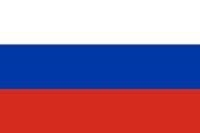
Spray drying of polymer dispersions for redispersible powder coatings
2024-10-16 08:48
Researchers found that the use of polyvinyl alcohol as a stabilizer reduces particle size and increases the yield of the spray drying process.
Redispersible powder coatings (RPCs), which do not rely on water in storage cans, provide a sustainable route to lightweight transportation and biocide-free storage of architectural coatings. However, difficulties with powder production and subsequent film formation and particle dispersion upon water addition, have prevented the method from becoming a reliable alternative to traditional waterborne coatings.
This study investigates optimization of a spray drying process for vinyl acetate-ethylene (VAE) polymer dispersions, as well as the mechanisms underlying film formation of redispersible polymer powders (RPPs) in water.
Spray drying of VAE dispersions was carried out in the presence of a protective colloid and, when necessary, the inclusion of anticaking agents. The addition of protective colloid and anticaking agents, as well as reduction of the inlet temperature, reduced the particle size and increased the spray drying yield. With a finer particle size of the anticaking agents, free-flowing powders were obtained. For evaluation of the effects on the spray drying process and the resultant powder characteristics, VAE dispersions with four different polymer glass transition temperatures (Tg) and two alternative particle stabilizations, polyvinyl alcohol (PVA) and an emulsifier-PVA mixture, were used. For PVA-stabilized VAE (P-VAE) dispersions, particle sizes down to 1.0 μm and process yields around 80 wt% were achieved, while the lowest particle size and highest yield achievable was 4.69 μm and 29.2 wt%, respectively, for emulsifier- and PVA-stabilized VAE (EP-VAE) dispersions. The morphology of the prepared powders was affected by the choice of stabilization type. When using P-VAE dispersions, particles agglomerated, forming a raspberry like structure, whereas EP-VAE particles resulted in larger, spherical particles.
When prepared powder polymers were used to formulate coatings, the wet scrub resistance (WSR) was influenced by the choice of VAE polymer with varying Tg and stabilization mechanism of the polymer dispersions. Coatings formulated with a low Tg EP-VAE exhibited enhanced film formation, leading to a higher WSR, while high Tg EP-VAE resulted in a lower WSR. Conversely, P-VAE powders did not provide coherent coating films and washed away completely after 200 cycles in the WSR test, however, provided favorable results with the addition of a solid plasticizer.
Source: Progress in Organic Coatings Volume 197, December 2024, 108769
More Hzinfo
- Brazil Growth Leads Latin America
- Across the Latin American region, GDP growth is nearly flat at just over 2%, according to ECLAC.
-
2025-04-03
- Biocompatible polycarbonate nanoparticles: new approaches for medical applications
- A new method for producing two-dimensional nanoparticles could revolutionise the use of biocompatible materials in medicine. Researchers have developed a method for specifically adjusting the size and
-
2025-04-03
- Clariant launches Ceridust™ 1310 to address carnauba wax supply chain volatility in printing inks
- Clariant announces the launch of Ceridust 1310, an innovative wax solution designed to address the increasing supply chain complexities facing formulators who rely on carnauba wax for printing ink app
-
2025-04-03


 English
English 简体中文
简体中文 Русский
Русский إنجليزي
إنجليزي